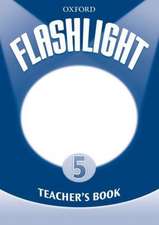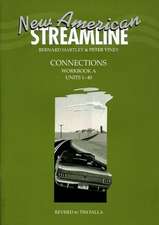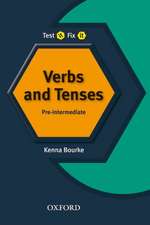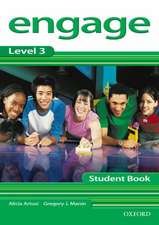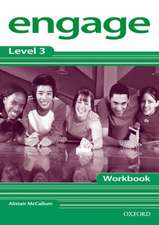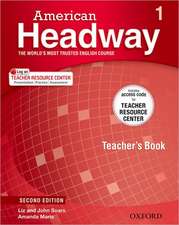insight: Upper-Intermediate: Student's Book: insight
en Limba Engleză Paperback – 6 mar 2014
Din seria insight
- 9%
 Preț: 351.78 lei
Preț: 351.78 lei -
 Preț: 405.55 lei
Preț: 405.55 lei -
 Preț: 403.57 lei
Preț: 403.57 lei -
 Preț: 404.66 lei
Preț: 404.66 lei -
 Preț: 246.27 lei
Preț: 246.27 lei -
 Preț: 350.96 lei
Preț: 350.96 lei -
 Preț: 374.05 lei
Preț: 374.05 lei - 11%
 Preț: 283.14 lei
Preț: 283.14 lei -
 Preț: 312.61 lei
Preț: 312.61 lei -
 Preț: 379.42 lei
Preț: 379.42 lei - 9%
 Preț: 404.58 lei
Preț: 404.58 lei - 10%
 Preț: 225.68 lei
Preț: 225.68 lei - 9%
 Preț: 351.30 lei
Preț: 351.30 lei - 7%
 Preț: 283.12 lei
Preț: 283.12 lei - 14%
 Preț: 225.60 lei
Preț: 225.60 lei - 9%
 Preț: 350.88 lei
Preț: 350.88 lei - 14%
 Preț: 225.52 lei
Preț: 225.52 lei - 10%
 Preț: 225.96 lei
Preț: 225.96 lei -
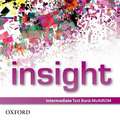 Preț: 10.71 lei
Preț: 10.71 lei - 18%
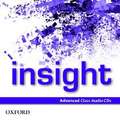 Preț: 631.41 lei
Preț: 631.41 lei - 18%
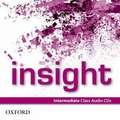 Preț: 631.49 lei
Preț: 631.49 lei - 18%
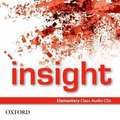 Preț: 631.41 lei
Preț: 631.41 lei - 18%
 Preț: 631.40 lei
Preț: 631.40 lei
Preț: 351.27 lei
Nou
Puncte Express: 527
Preț estimativ în valută:
67.22€ • 69.92$ • 55.50£
67.22€ • 69.92$ • 55.50£
Carte disponibilă
Livrare economică 14-20 martie
Livrare express 08-14 martie pentru 66.76 lei
Preluare comenzi: 021 569.72.76
Specificații
ISBN-13: 9780194011099
ISBN-10: 0194011097
Pagini: 144
Dimensiuni: 214 x 299 x 7 mm
Greutate: 0.42 kg
Editura: OUP OXFORD
Colecția OUP Oxford
Seria insight
Locul publicării:Oxford, United Kingdom
ISBN-10: 0194011097
Pagini: 144
Dimensiuni: 214 x 299 x 7 mm
Greutate: 0.42 kg
Editura: OUP OXFORD
Colecția OUP Oxford
Seria insight
Locul publicării:Oxford, United Kingdom
Descriere
There are ten units in the Student's Book. Each unit is divided into five sections (A-E), with a Vocabulary insight page and a Review. After every two units, there is a Cumulative review. At the back of the book, there is a ten-page Vocabulary bank. Every unit begins with a Reading and Vocabulary lesson which introduces the topic of the unit in an information-rich text. The reading text also contextualizes two vocabulary sets which are recycled through the rest of the unit. One of these is a Vocabulary insight ( V insight) set which explores language in greater depth. These lessons always begin with a speaking task which gets students thinking about the topic of the unit and expressing their own ideas. At the end of the lessonanother speaking task allows students to react to the text and demonstrate their understanding of the issues raised. Lesson B picks up on the grammatical structures that students met, but may not have recognized in the reading text in section A. the guided discovery approach to grammar ensures that students actively engage with the new language. Students analyse examples, complete rules or answer questions about the grammar which helps them to focus on the new structures, their meaning and use. A final speaking activity allows students to use the new language in a personalized and productive way. Lesson C offers students opportunities to practise the grammar and vocabulary from the previous sections. Listening activities contexualize a new vocabulary set which is recycled through the rest of the unit. Students are encouraged to react to the topic of the listening and exchange ideas and opinions. This lesson also presents functional language through several model dialogues, as well as controlled and free practice. Lesson D introduces students to the culture of the English-speaking world through a text on the customs, traditions and history of English-speaking countries. There is always a cultural comparison element, which encourages students to think about similarities and differences with their own culture. section E always presents a model text which students analyze for the language, structure andformat used. There is a always a writing strategy box on these pages which develops key elements of the writing process, for example, planning, brainstorming, deciding on register, etc. These pages also include a step-by-step writing guide which takes students through the process of generating ideas, planning, writing and checking their work. The writing task lets students use the language taught throughout the unit in a personalized, productive and creative way. This page raises awareness of how language works by developing a deeper understanding of a language point introduced earlier in the unit. There are also activities which build students' study skills, including ways of recording vocabulary, using a dictionary or a thesaurus. Through a series of strategies students learn how to use reference sources that can help them with their learning now and in their future life. The review gives students another opportunity to recycle and check how well they know the vocabulary and grammar they have learned in the unit. Students get marks for every completed review, so it is easy to monitor progress through the book. There is a two-page cumulative review at the end of every two units. This reviews key language and skills from the Student's Book up to that point through a series of skills-based tasks. Each Cumulative review includes listening, speaking, reading, use of English and writing exercises. There are two cross-references to the Vocabulary bank from each unit. Each Vocabulary bank presents and practises two vocabulary sets that are topically related to the unit.
Caracteristici
Every unit includes a writing strategy and either a listening or reading strategy that develop students' skills and help them become more confident and autonomous learners. Strategies are practiced through a number of activities, so students can immediately apply the skills they have learnt

